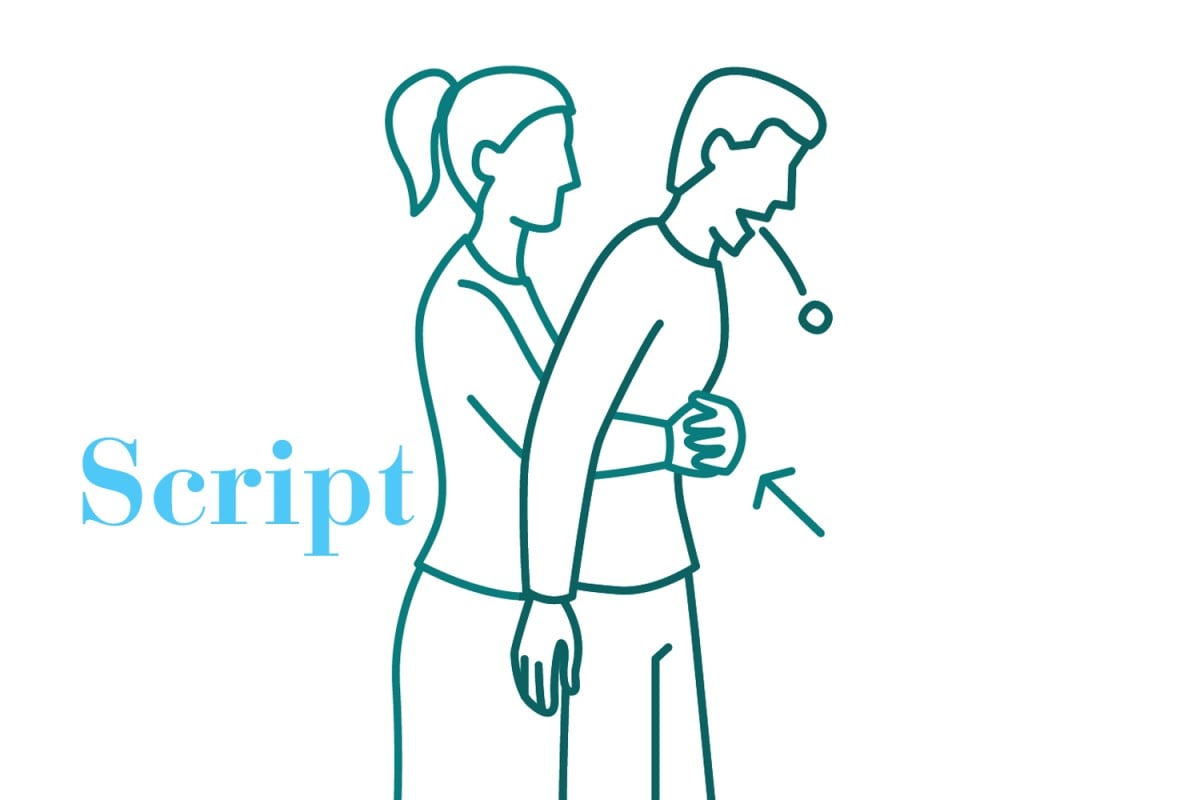
Choking can be dangerous, or even fatal. Luckily, one man created a way to save lives easily and quickly.

Voice 1: Every year, thousands of perfectly healthy people die from choking. The majority of these deaths come from choking on food either at home or in restaurants. Fortunately, when a piece of food gets stuck in your air passage, a good few coughs will usually dislodge the blockage. But sometimes the lump of food refuses to budge and the person chokes, sometimes to death.
Voice 2: Obviously, onlookers rush to assist someone who is choking, and the natural reaction is to thump the afflicted person on the back. But back in the 1970s, a young doctor called Henry Heimlich began to argue that a good thump on the back could force the obstruction further down the air pipe towards the lungs, not dislodge it the other way.
Voice 1: Heimlich started to study new techniques for helping a person who is choking. He came up with what is now known as 'the Heimlich Manoeuvre'. This involves putting the arms around the casualty from the back in a big hug, holding the hands tightly together just above the stomach area, below the ribs, and then delivering strong presses upwards until the obstruction is forced up the air pipe and through the mouth.
Voice 2: In summer 1974, Heimlich wrote an article about his new anti-choking technique in an American medical journal. Newspapers and magazines picked up the piece, and readers all over the US began using the technique if they came across a situation of choking at home or in a restaurant. It worked, and Dr Heimlich became a household name.
Voice 1: The Heimlich Manoeuvre was quickly adopted all over the world as the way to help a choking victim. Today, medical schools and first-aid courses teach it as a matter of course, and posters on how to perform the 'manoeuvre' are stuck behind kitchen doors in restaurants and cafés as part of health and safely.
Voice 2: The story of the Heimlich Manoeuvre moves forward to May, 2016. Dr Henry Heimlich, 96 years old, is now living in Deupree House, an assisted living retirement home in the American city of Cincinnati. The residents are having dinner together one evening in the dining room, when a female diner sitting near Dr Heimlich suddenly starts to choke. A piece of hamburger has got stuck in her windpipe.
Voice 1: Quick as a flash, Dr Heimlich is on his feet to deal with the situation. He performs his self-named move on the 87-year-old resident, a piece of meat flies out of her open mouth, and the old lady, though shocked, quickly begins to breath normally again after her short ordeal.
Voice 2: The following day, the grateful patient wrote Heimlich a short note saying 'God put me in the seat next to you'. That evening, doctor and patient had dinner together as a small celebration. The incident was the first time Dr Heimlich had practiced his own technique in many years, and it wasn't at a demonstration in front of medical students or first-aiders. It was in an actual life or death situation.
Voice 1: Heimlich died at the end of last year. But his work will live on for a long time – as will many of the people it has saved. If you don’t know how to perform the Heimlich Manoeuvre, it is a good idea to learn. You never know when you might need to use it to save someone's life.